RTL8710 First Impressions
Published
by Thorsten von Eicken
At https://blog.voneicken.com/2018/lp-wifi-rtl8710-lps/
In
Running Wifi Microcontrollers on Battery
Tagged
Low-Power
,
Wifi
,
Rtl8710
The RealTek RTL8710 is pitched directly at the esp8266 and it even comes in an RTL-00 module that has the same pinout as an esp-12f module. How does it fare at low-power Wifi?
Experimental set-up
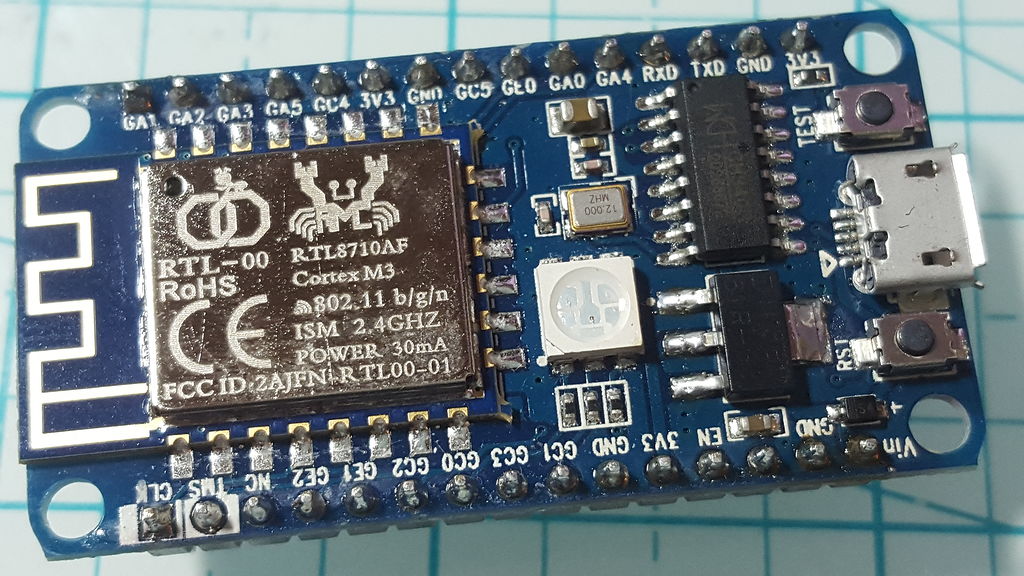
To test the RTL8710 I purchased a NodeMCU-like development board shown in the photo on the right. Like many similar esp8266 and esp32 boards it is ready to stick into a breadboard, has a USB-serial interface, and a voltage regulator.
Unfortunately the RTLDuino comes with the dreaded AMS1777 “high-dropout regulator” that is unusable on a LiPo, which I need to make accurate power consumption measurements. Fortunately after spending an hour looking at the datasheets of all SOT223 LDOs I could find, I hit paydirt: the Diodes Incorporated AP7361C-33ER is pin-compatible with the AMS1777, is a true LDO (360mV @1A typ), and is stocked by Digikey. (If you order one be sure to get the “ER” version and not the “E”, which is not pin compatible.) I used some hot air to swap the regulators out and so far it’s working like a charm!
Another problem with the RTLduino is that it’s not self-sufficient: the USB port is a bit of an illusion because one can’t program the thing through it. The processor in the RTL8710 is an ARM Cortex-M3 and does not have any serial programming capability. Instead one has to resort to a CMSIS-DAP, ST-Link, J-Link, or some JTAG programmer. I ended up using a bit of a hacked up set-up with OpenOCD and an ST-Link-V2.
Specifications
RealTek seems to have made an effort to make the RTL8710 (and the very similar RTL8795) accessible, but between the language barrier and the ever-present secrecy the truth is that they’re light years behind Espressif. Documents are most readily available from the github repos of a number of russian makers that discovered the module a couple of years ago. So it goes…
When I first saw the power specs in the datasheet I had to laugh. Here is the table I saw next to the esp8266 table I’m quite familiar with. Copying? Naaah…
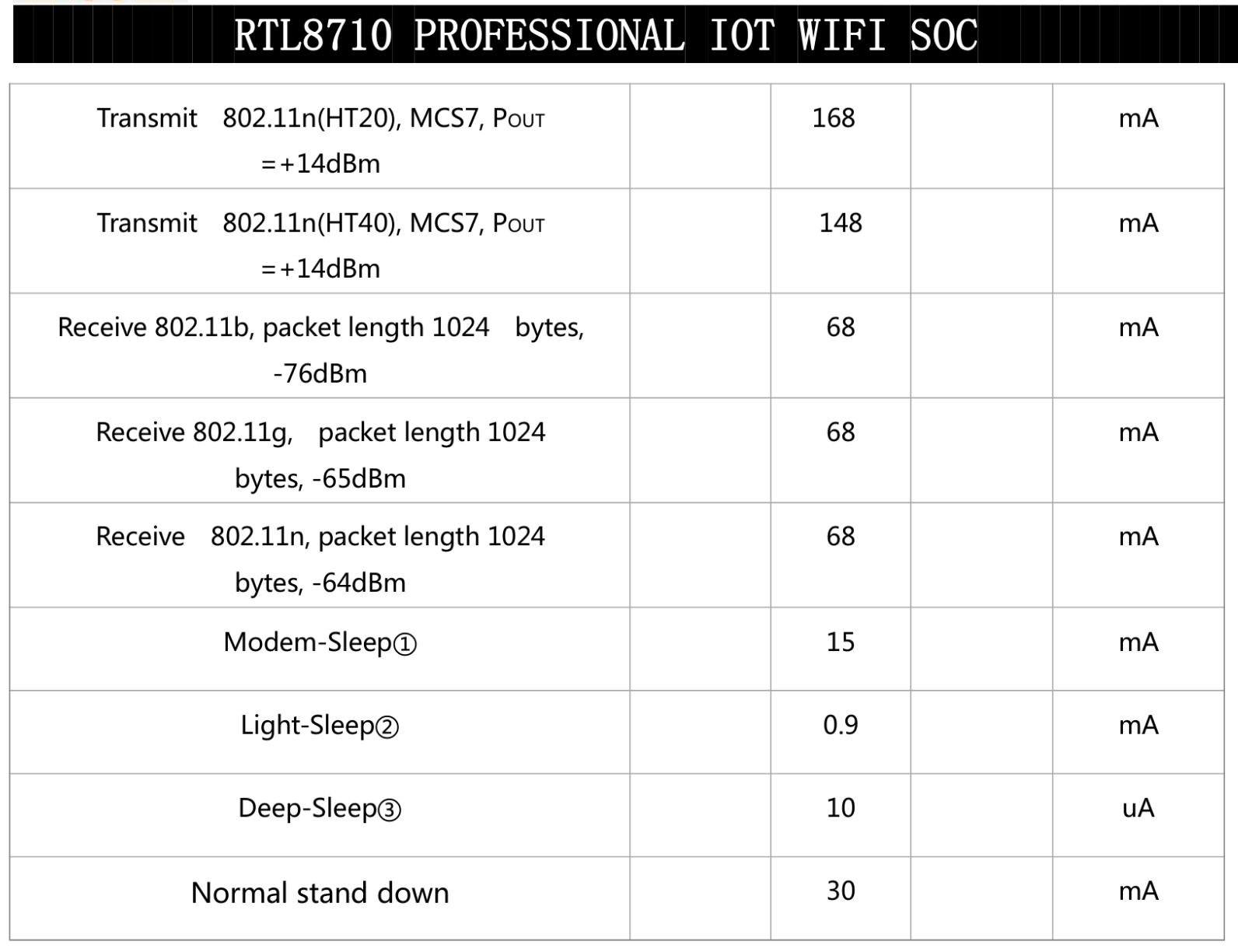
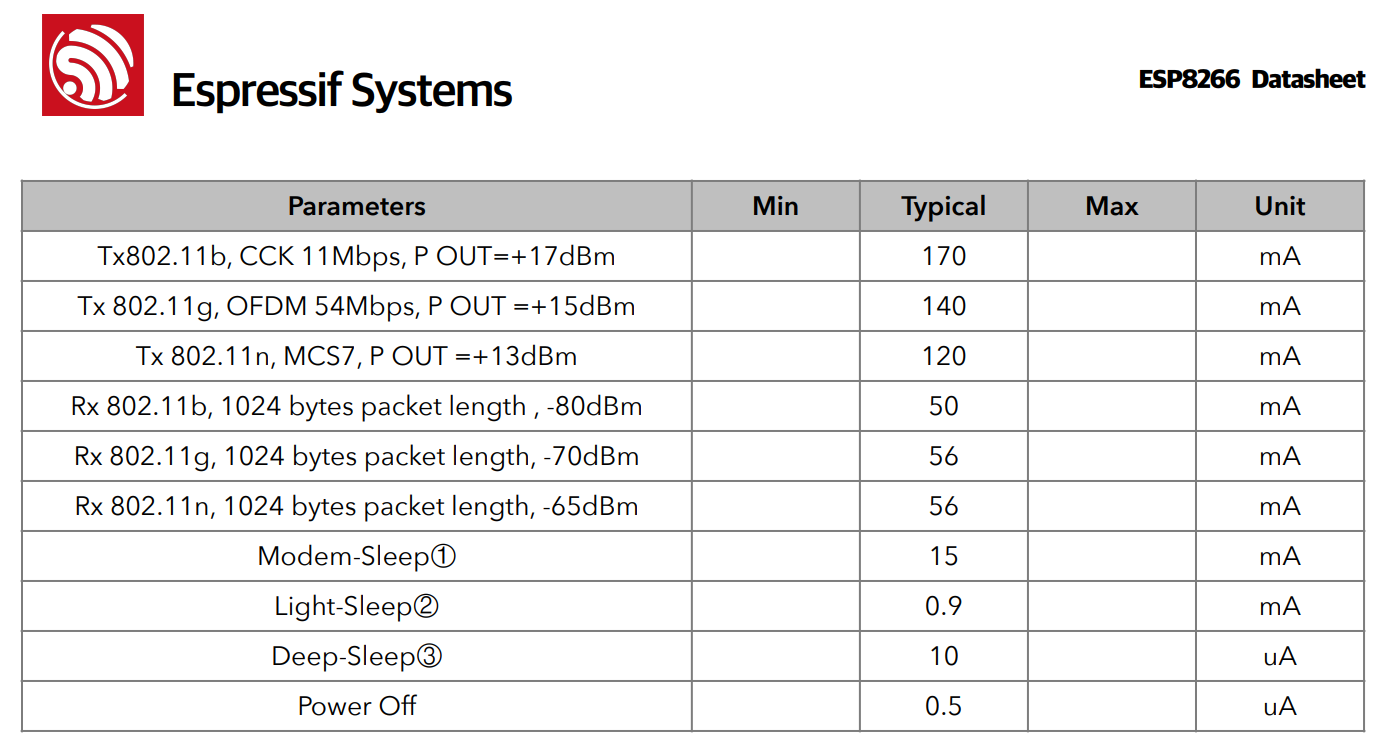
The specs are basically the same, no magic here. (I have no idea what “normal stand-down” refers to.) The question is really whether RealTek does a better job at putting the processor to sleep while maintaining an association with the access point.
Leisure Power Save
Leisure Power Save or Ameba LPS is the name RealTek gives to the RTL8710 mode where it maintains an association with the access point while being asleep by periodically waking-up to catch a beacon. LPS can be turned on easily and there is also a function to set the DTIM interval (the equivalent to Espressif’s listen-interval).
I decided to cut right to the chase and modified the RealTek sample SleepWithWifiIdle Arduino sketch following the lines of PVVX’s changes to set the DTIM interval to every 4th beacon. I added the code I used for the esp8266 to open a TCP connection to my local server and send a message plus to toggle the LED so I could easily trigger the scope.
The resulting scope capture is shown below. It spans a total of 12 seconds and shows 3 loop iteration wake-ups that are 5.4 seconds apart.
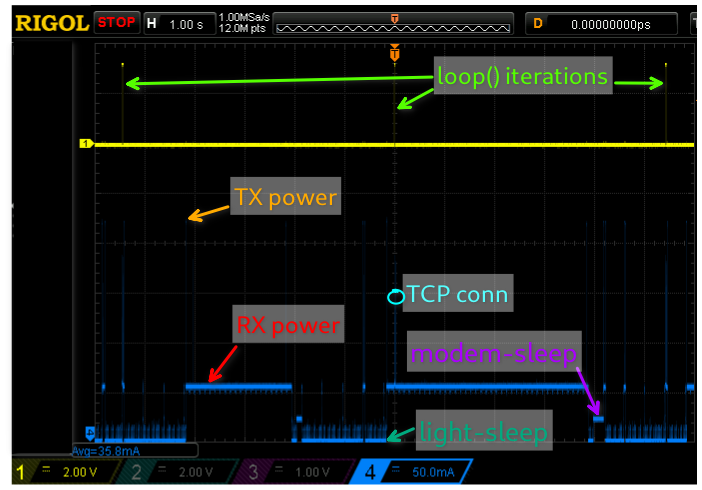
Just in case you’re wondering: nope, I didn’t mix-up my scope captures, this is really an RTL8710 capture and not a misplaced esp8266 one! They really look that similar.
In the capture one can easily make out the various power levels and they match up with the specs. The TCP connection happens very rapidly (in 11ms according to a packet trace I captured) and one can see the very brief wake-up periods every 400ms to catch a beacon. Something I don’t like at all are the very long high-power periods at ~60mA: those will ruin the low-power performance!
Looking a bit closer at the activity, here is a zoom-in of the same capture focusing on one loop iteration:
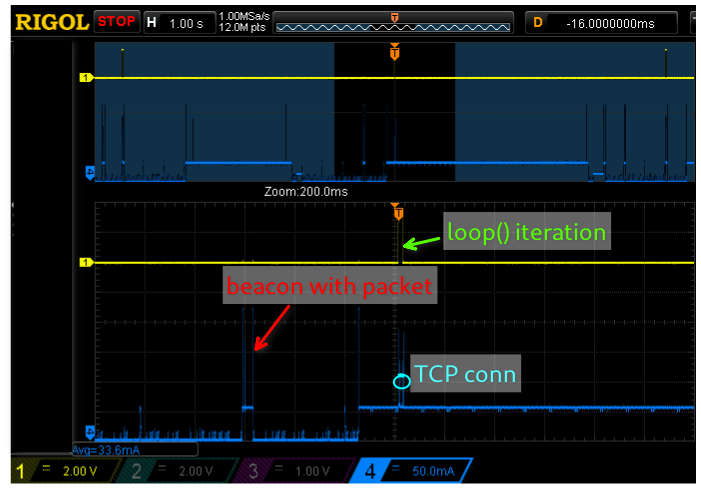
The pulse on the yellow trace spans the entire loop iteration. The corresponding TCP packet transmissions can be seen as power spikes. In addition, the capture shows a beacon with a packet pending. The three TX power spikes of that wake-up period should look familiar: power-save-off, then an ACK for the packet received, and a power-save-on packet. The total duration is shorter than for the esp8266 or esp32: the RTL8710 re-enters power save in just under 40ms.
Here is a Wifi packet capture of such a beacon with three packets to pick-up:

First comes the beacon with the TIM field stating that there’s a packet for the RTL8710 (I checked the packet details to confirm), then the RTL8710 sends a null packet without “P” flag, meaning it’s exiting power-save. The AP ACKs that packet and follows with a 3-packet sequence that it had stored up. The RTL8710 ACKs each one and then 30ms after the last one sends a null packet with the “P” flag to tell the AP that it is re-entering power-save mode.
Now to the very long periods at high power. The RTL8710 datasheet says the following about the Leisure Power Save mode:


So somehow there is a 2-second timer involved and, looking at the scope captures, indeed one of the high-power periods is a tad over 2 seconds long and the other a tad over 4 seconds. This pattern of 2-second and 4-second high-power periods repeats consistently although I can’t quite figure out what exactly triggers the periods.
In a last attempt at LPS I changed the settings to the ones I used with the esp32: a DTIM interval of 50 (5 seconds) and a loop interval of 23 seconds. The following scope capture shows a total elasped time of 1 minute:
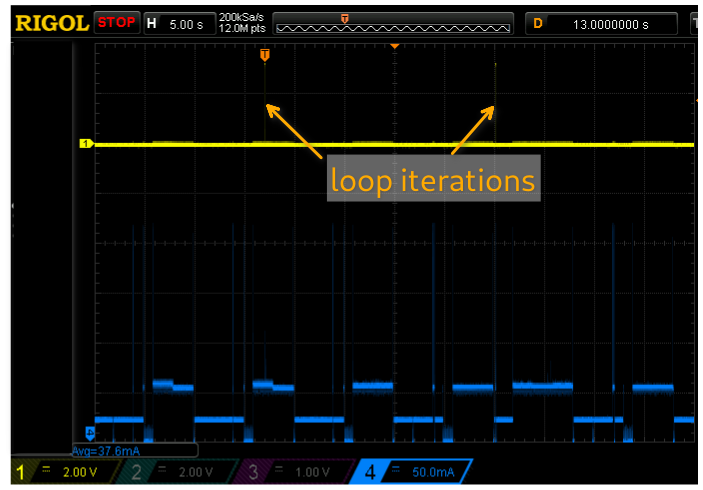
In this trace the RTL8710 spends more time at RX and modem-sleep power levels than powering down to light-sleep. Clearly cranking the DTIM interval up does not help.
So far it does not look like the RTL8710 provides a better alternative to the Espressif microcontrollers for low-power operation. The LPS mode may be usable given some tweaking but I very much doubt that it can be made to use less power than the esp32.
The next post examines how the RTL8710 performs in deep-sleep with periodic wake-up.